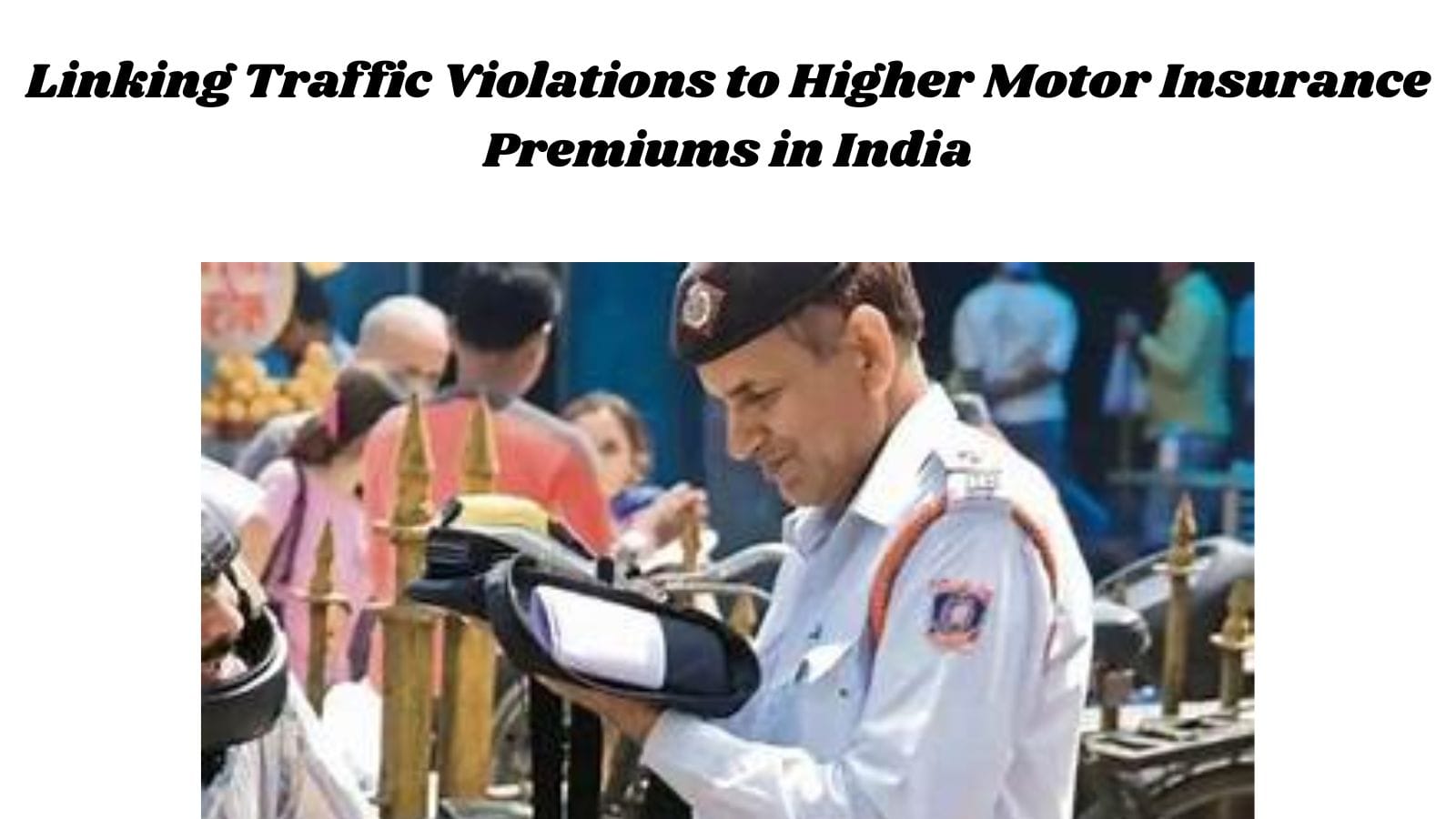India is taking a bold step toward road safety. Delhi’s Lieutenant Governor, VK Saxena, has a new plan. He wants to connect motor insurance premiums to traffic violations. The concept is simple: drivers who break traffic rules pay more for insurance. This reflects systems used in many developed countries. It aims to improve accountability on Indian roads.
This initiative could change how insurance premiums are set. It would move from vehicle-based pricing to assessing risk based on driver behavior. It’s a game-changing proposal. It fits with India’s move toward digitization, smart governance, and reforms that focus on citizens.

The Rationale Behind the Proposal
At its core, the proposed system is designed to act as a financial deterrent against rash and negligent driving. Here’s why it’s needed:
- In 2022, India recorded over 4.37 lakh road accidents, leading to 1.55 lakh deaths.
- Speeding caused almost 70% of these accidents. Red-light violations also played a big role in fatal crashes. (Source: Ministry of Road Transport and Highways – MoRTH)
India is already one of the most accident-prone nations globally. This system connects insurance costs to how drivers behave. It encourages drivers to adopt responsible habits.
Global Precedents
Several countries have already adopted similar models:
- United States: Insurance premiums can increase by 20-30% after offenses like speeding or DUI.
- Germany and the UK: Driver profiles and violation history influence premium calculation.
- Japan and Australia: Insurance discounts are offered to safe drivers with clean records.
These models have not only reduced road accidents but have also fostered a culture of accountability and safer driving.
Proposed System: How It Would Work in India
Though the proposal is still in early stages, here’s a look at its expected components:
🔹 1. Tiered Premium Structure
- Drivers will be categorized into risk tiers based on the number and severity of their violations.
- Premiums will be adjusted accordingly (e.g., Tier 1 = safe drivers, Tier 3 = frequent violators).
🔹 2. Integration with VAHAN Database
- India’s VAHAN portal, which tracks vehicle registration and violations, will feed data into insurers’ systems.
- Real-time tracking ensures that violation history is regularly updated.
🔹 3. Collaboration with IRDAI
- The Insurance Regulatory and Development Authority of India (IRDAI) is expected to work with MoRTH to draft rules.
- Insurers will need to adopt new underwriting algorithms based on driving behavior.
🔹 4. Penalty vs. Incentive Model
- While violators may face higher premiums, safe drivers could earn discounts.
- A balance between punishment and reward is essential for long-term behavioral change.
Potential Impact of the System
Benefits
- Promotes Safer Driving Financial pressure discourages violations.
- Reduction in Road Accidents With better behavior, roads become safer.
- Fairer Insurance Pricing Those who drive responsibly don’t subsidize reckless drivers.
- Data-Driven Decisions Brings transparency and consistency to the insurance industry.
Challenges and Concerns
- Data Accuracy Incorrect challans or outdated data could penalize innocent drivers.
- Implementation Complexity Integrating multiple databases (police, RTO, insurers) is no small task.
- Potential for Disputes Drivers may challenge higher premiums, especially if violations are disputed.
- Digital Divide Rural areas may face challenges in digital compliance and grievance redressal.
Real-Time Examples and Case Studies
Case Study: Delhi Traffic Violations
- A 2023 Delhi Traffic Police report showed that 60% of vehicles in fatal accidents had past violations.
- Most common violations: over-speeding, red-light jumping, and lane indiscipline.
Global Example: United States
- A 2022 study by ValuePenguin revealed:
- A single speeding ticket can increase a driver’s premium by 23% on average.
- Multiple violations lead to further hikes or denial of coverage.
Expert Opinions
— Rakesh Jain, former CEO of Reliance General Insurance
“We support behavior-based pricing, but a fair and transparent mechanism must be developed to avoid misuse.”
— IRDAI spokesperson during 2023 insurance reform talks
Fun Facts & Lesser-Known Insights
- Finland calculates traffic fines based on income levels and violations. A millionaire once paid $100,000 for speeding!
- 🇮🇳 Over 3 crore traffic challans were issued across India in 2023 alone.
- Vehicles with more than 5 challans in a year are 3x more likely to be involved in a fatal accident.
Conclusion
The proposal to link motor insurance premiums with traffic violations is a bold step toward The proposal to link motor insurance premiums with traffic violations is a bold step toward reforming road safety in India. It presents a behavior-based pricing model. This model punishes reckless driving and rewards safe driving.
There are practical hurdles, like data integration, fairness, and public acceptance. But the long-term benefits are greater than these concerns. If done openly and efficiently, this system could change insurance in India. It may also make our roads much safer.
It’s time for Indian roads to not only go digital but also go responsible.
The Importance of Homeowners Insurance in the Wake of Natural Disasters
Frequently Asked Questions (FAQs)
It links your vehicle insurance premium to your history of traffic violations. More violations = higher premium.
he VAHAN database (maintained by MoRTH) will track and share this data with insurers.
No. Minor violations like parking may carry less weight than serious ones like DUI or over speeding.
Safe drivers may benefit through lower premiums or “no-claim bonuses” and clean driving discounts.
As of now, it’s being discussed with IRDAI and MoRTH. A pilot project may launch in select cities first.
